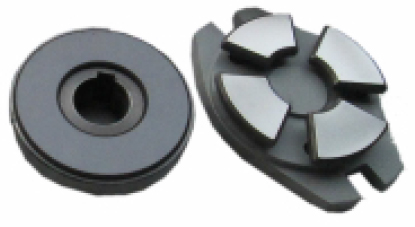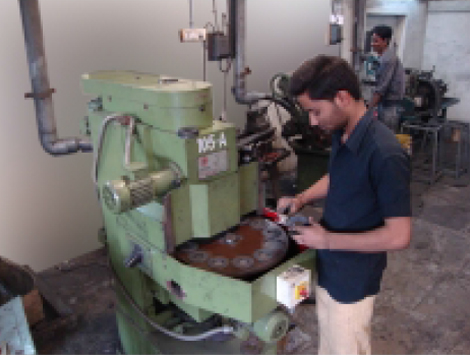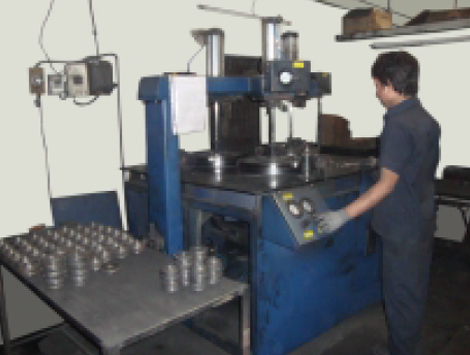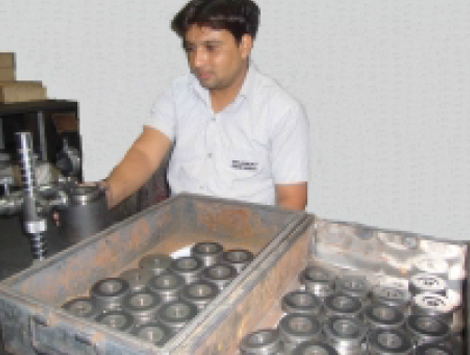Using Carbon Thrust Bearing in Sub Motor ( G10Z Grade Carbon )
- Saves electricity upto 10%
- Increase Pump efficiency upto 5%
- Starts & runs the Pump even at low / fluctuating voltage
- Motor runs ar full RPM
- Gives upto 10% more output of water in LPM as compared to teflon / fibre
- Makes pump rotates freely & silently
- The motor does not get locked even offer prolonged rest
Submersible motors are fitted with Hydrodynamic Self Adjusting Tilting Shoe Thrust Bearing to take the axial down thrust
from the pump. These are a complex and clever part of a reliable submersible motor and probably not understood very well.
Principle
The Hydrodynamic Thrust Bearing transmits the rotating shaft's axial thrust load to the frame of the motor
which is mechanically supported in the well. The axial Thrust load is transmitted through the bearing on a self renewing
film of lubricant which is water in most motors. The pressure in the fluid film supports the load without the thrust disc
or pivot shoes making contact.
Theory
Fluids tend to stick to most surfaces due to viscosity. and in the case of loose segments thrust bearing
we rely on the fluid sticking to the surface on the rotating thrust disc. This fluid is then dragged between the thrust
bearing disc and the face of the pivot shoe by centrifugal force and forms a wedge shaped film. This wedge shaped film
is essential for the successful operation of the thrust bearing. When the bearing is operating correctly there is no
contact between the disc and the face of the pivot shoe. The only time there is contact is when the motor is stopping
or starting. This means there should be only negligible wear between the faces and no wear while the motor is operating.









